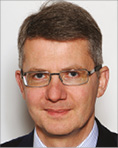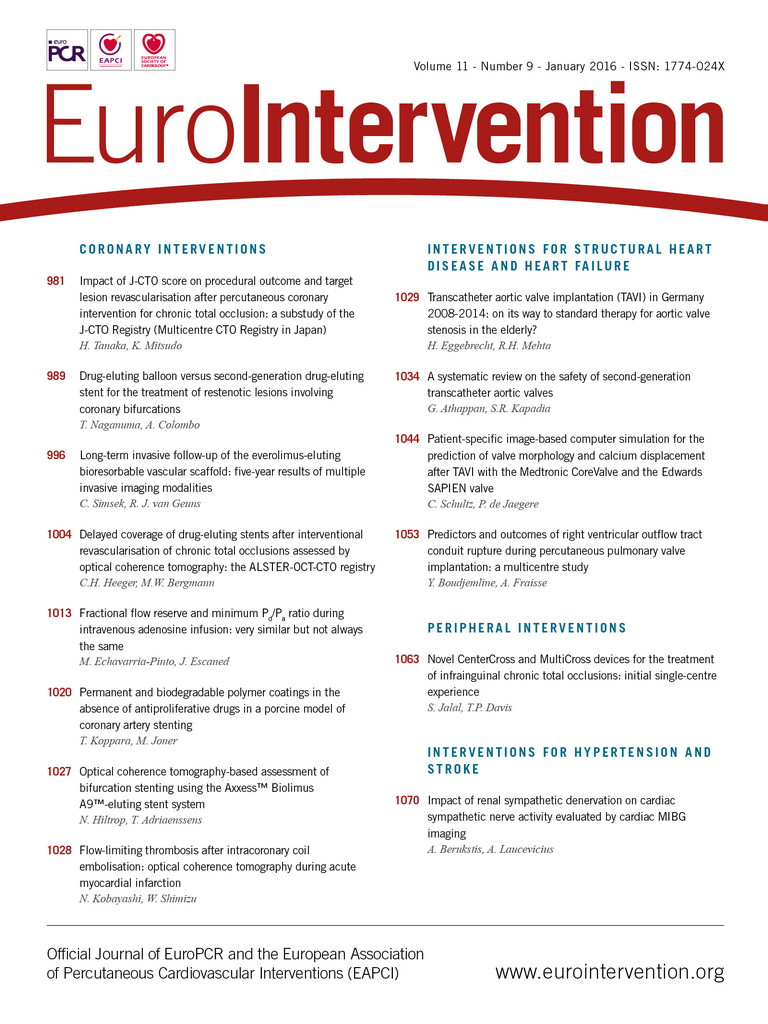
In 2015, the Valve for Life initiative was launched by the EAPCI in order “to improve access to transcatheter valve interventions across Europe”. Like the successful Stent for Life initiative for primary percutaneous coronary interventions, Valve for Life aims to raise the awareness of valvular heart disease in the general population, raise educational standards for healthcare professionals and specialists, help to facilitate access to novel therapies such as transcatheter heart valve (THV) interventions, reduce obstacles to therapy implementation and diminish age and gender discrimination in the access to care.
Valve for Life – the challenge
The success of a programme such as Valve for Life depends on its ability to balance education and clinical knowledge with the specificities of each individual country and its healthcare system. Our Association has been built on this, and this balance is reflected in the organisation of Valve for Life. The EAPCI board has named a central Oversight Committee for the Valve for Life programme led by myself as President of the EAPCI, along with Michael Haude, EAPCI President-Elect and Andreas Baumbach, EAPCI Secretary. The individual Valve for Life pilot country “champions” will be joining us – for France, the Country Champion is Martine Gilard, and for Poland, Dariusz Dudek and Adam Witkowski. These two pilot countries have their own specific Valve for Life steering committees made up of their Country Champions and different local physicians. Industry has been approached for funding, with Edwards Lifesciences, Abbott Vascular and Medtronic offering their support for this ambitious endeavour in clinical knowledge and awareness.
Our overall objectives are challenging and should be seen over the long term. The EAPCI is committed through Valve for Life to enhancing awareness concerning the inequality of patient access to the lifesaving indications of THV therapy in Europe. Through Valve for Life we hope to address the disparities between countries, as well as inform government officials, healthcare administrators and healthcare providers – both nationally and at a European level – about the clinical and economic value of THV therapy in the management of valvular heart disease. Our Association will continue to promote synergies and collaboration between cardiologists and cardiovascular surgeons, as well as being committed to expanding the Valve for Life initiative from the initial two pilot countries to other, underserved, regions in Europe, in part by educating programme ambassadors. The EAPCI, through the creation of the Valve for Life initiative, has set the goal of increasing the treatment of severe valvular heart disease by 20% by 2020 in Valve for Life countries.
Pilot countries today – a success story begins
Of the two pilot countries in the programme today –France and Poland– each had identified its own specific obstacles to providing optimal care. France, where Valve for Life is just beginning, will focus on mitral valve treatment and replacement, as well as aortic valve replacement. The French organisation will focus on the problem perceived in the overall number of reimbursed procedures, the improvement of relations between cardiac surgeons and interventional cardiologists and the limited number of eligible implanting centres.
The Polish Valve for Life campaign, led by Country Champions Dariusz Dudek of the Collegium Medicum, Jagiellonian University, Krakow, Poland (who is also chair of the EAPCI National Societies & International Affairs Committee) and Adam Witkowski of the Institute of Cardiology, Warsaw, Poland (EAPCI Fellowship Committee Chair), along with the President of the Polish Cardiac Society, Professor Zbigniew Kalarus and Professor Jarosław Kaźmierczak, the Polish country Consultant in Cardiology, has successfully begun highlighting the current disparity of providing more TAVI in a country that has the intellectual, clinical and financial support to offer this treatment.
Poland, which launched Valve for Life in 2015, is already seeing its experience bearing fruit: a recent decision by the Polish Ministry of Health allocating funds for an additional 100 interventions in 2016 means that the Poland Valve for Life campaign will achieve the 20% growth rate this year… already meeting our 2020 objective!
The Polish experience provides us with an excellent case in point. While TAVI has been almost universally acknowledged as a viable clinical option for patients with severe aortic stenosis (AS) who are at increased risk for cardiac surgery, the use of TAVI has been directly affected by the different reimbursement strategies and different healthcare systems of individual countries which prevent it from being fully available1. TAVI penetration in 2014 across Europe was seen to vary dramatically from country to country, with more than 150 procedures per million inhabitants in Germany, to countries such as Poland where there are fewer than 50 procedures per million per year with the POL-TAVI registry, involving 21 centres throughout Poland, counting only 472 TAVI interventions in 2014. However, when the economic capacity of a country is brought into the TAVI equation, the Polish situation is unique, in that the Polish economy today remains vibrant and growing. Seen in this light, Poland should be able to afford and offer a fourfold increase in TAVI procedures, allowing it to be at the same relative level as Germany based on GDP per capita versus number of TAVIs per million. Considered in these terms, the optimal TAVI rate in Poland could be as much as 50 per million per year or 2,000 a year as opposed to the less than 500 today – and this is the goal for the Valve for Life campaign in Poland. Dariusz Dudek and Adam Witkowski hope to make this goal a reality over the next five years.
In order for the Polish Valve for Life initiative to shape public opinion positively and “create the pressure and the suitable climate for serious discussion with decision-makers about increasing expenses for TAVI”, an ambitious programme has been launched. Beginning in 2015, a campaign was launched, addressed to the elderly Polish population (greater than 70 years) and their families, to acquaint them with TAVI. By last November, more than 11 million people throughout Poland had received the Valve for Life message through announcements, articles and interviews in magazines and newspapers, on public and private radio as well as television. Essential to the momentum of this operation, campaign patrons, sponsors and partners – healthcare professionals and industry sponsors – were approached and enrolled in the effort, helping to support this educational and public relations drive.
Valve for Life continues in 2016 throughout Poland with dedicated websites, TV advertisements and campaigns, community media (Facebook, Instagram), E-newsletters to members of the Polish Cardiac Society and an ongoing series of interviews in the press, on the radio and on TV. Press conferences will be held, and posters and leaflets will be created and distributed.
From the beginning, this national mobilisation has targeted medical specialists. Dedicated sessions during the October 2015 International Congress of the Polish Cardiac Society with the Polish Ministry of Health were well attended, focusing on innovation in cardiovascular medicine. Local symposia addressing general cardiologists, internists and family doctors will take place throughout 2016, helping to improve knowledge and awareness of TAVI as well as opening lines of communication between these healthcare providers and interventional cardiologists. Special sessions dedicated to Valve for Life have also been developed. Screening examinations, including echocardiography for people attending seminars, symposia, congresses and other non-cardiology events, will be used for further promotion of general knowledge concerning valvular heart disease. And, in addition to these activities, 2016 will see the implementation of a national programme for transcatheter valve therapies in Poland.
The future
The EAPCI is proud of its commitment to education and the creation of this new initiative, Valve for Life. We actively support the Polish Valve for Life campaign which has shown such early success, as well as the continued development of the POL-TAVI registry. These local actions, along with the pilot programme now beginning in France, will act as a laboratory and foundation for our future ability to sensitise public opinion as well as healthcare and reimbursement authorities to the efficacy of these new treatments. By raising awareness and increasing education, we hope to remove the obstacles that prevent the implementation of best practices throughout Europe. The future evolution of patient care hinges on our ability not only to ensure the education of interventional cardiologists, but also to communicate effectively with other health professionals, the general public and national healthcare and reimbursement authorities to advance our understanding and access to different treatment options such as TAVI. It is through programmes such as Valve for Life that we are ultimately able to offer improved care and quality of life for all our patients.
Reference

